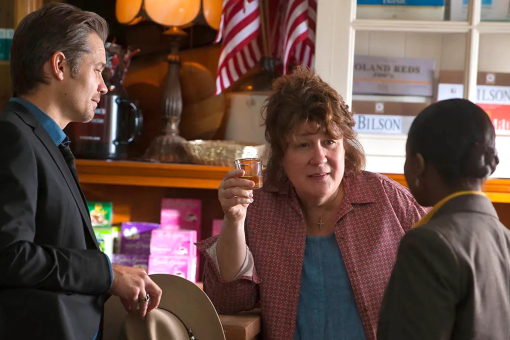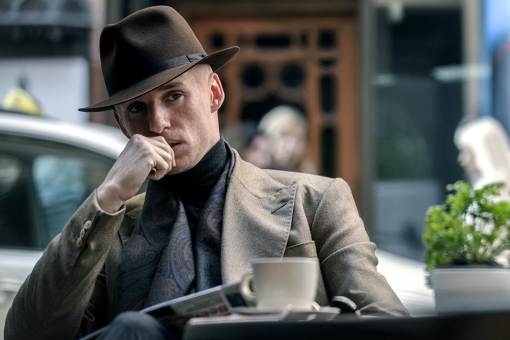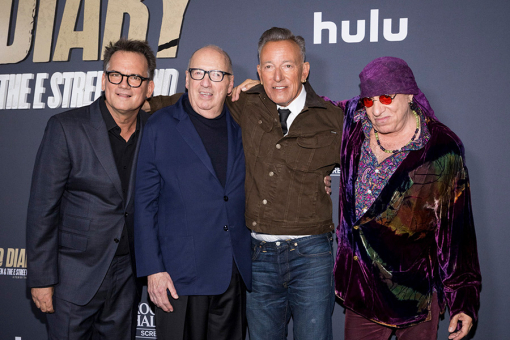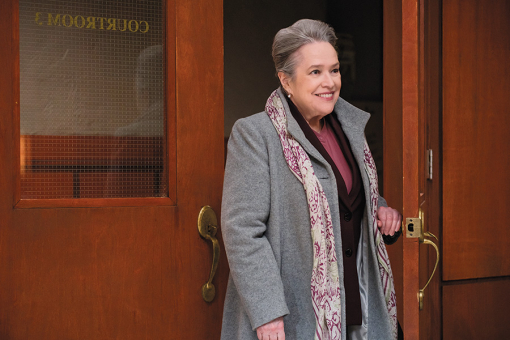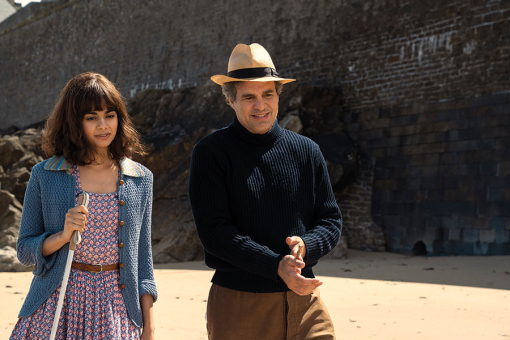By now, the Equal Rights Amendment was supposed to be history, not news.
The proposed amendment to the U.S. Constitution was intended to guarantee equal legal rights for all Americans, regardless of sex. Approved by the House of Representatives in 1971 and by the Senate the following year, it needed to be ratified by 38 states by 1979.
But before that could happen, Phyllis Schlafly stepped in. The story of how the conservative activist defeated the ERA (which has since been revived — and still awaits ratification) is a large part of the story of Mrs. America, the FX on Hulu limited series now streaming on FX on Hulu.
A deep dive into the second wave of feminism (suffragettes were the first), the series challenges assumptions across the political spectrum.
To some, Schlafly (Cate Blanchett) was the enemy, fighting the ERA and other feminist causes. To others, she was a hero: a wife and mother of six whose Eagle Forum promoted traditional values.
From the opening scene — in which Blanchett models an American-flag bikini at a 1971 political fundraiser — viewers may reconsider their opinions of both the woman and the era.
Over nine episodes, the series adds shades of gray to what had been monochromatic views of this history.
"None of us were interested in a piece of advocacy entertainment," Blanchett says in a Los Angeles studio, where Mrs. America's principal cast members and producers gathered for their emmy photos. They shared an easy rapport, borne of their five-month shoot in Toronto.
Dahvi Waller, the series' creator, showrunner, writer and executive producer, recalls early talks with fellow executive producer Stacey Sher, who was determined to present the story "in a nonconfrontational way." "We have to start talking to each other as humans," Waller says.
"There is a lot of doctrinaire, binary thinking on both sides," adds Blanchett, who also served as an executive producer. "These are extremely messy, smart, hilarious women. And we see them from different perspectives. It is interesting to see the contradictions within them."
Indeed, Mrs. America does not shy away from the rifts that plagued the women's movement. White, middle-class feminists could not always relate to lower-income women of color; heterosexual women did not always welcome lesbians. Solidarity had to be learned.
"It was very important to me to tell the birth of the intersectional feminist," Waller says.
It wasn't just feminists who eventually saw how issues connected. Schlafly's conservatism was rooted in Cold War politics. A staunch anti-Communist who wanted to focus on national security, she initially dismissed the ERA.
"I don't know what all the fuss is about," Schlafly says to a friend named Alice in the series. "There are so many more pressing issues — like national security." "But this is about national security," Alice counters. "They're going to ship our daughters off to Vietnam."
Schlafly realized that while conservative men condescended to her, their wives were listening. Coolly patrician but hungrily ambitious, she found her natural constituency.
"I keep thinking of this as the origin story of our culture wars," says Waller, who had vowed "no more period dramas" after working as a writer-producer on AMC's Mad Men.
So she approached this project not just from the historical events but from what fueled them. "I would go into the writers' room and say, 'What is the emotional story? What is exciting and relatable and human?'"
Schlafly, Gloria Steinem, Shirley Chisholm, Betty Friedan, Jill Ruckelshaus and Bella Abzug are each the focus of an episode. Additional installments center on marriage and the National Women's Conference, and the finale is set in 1980.
Although it would have been easy to resort to caricatures, the series instead presents rich, full-dimensional characters. Blanchett swans through the episodes like a benevolent queen, and two moments — both silent — affirm her magnificence.
During a debate with Friedan, Schlafly warns that the ERA won't save women, particularly those whose husbands dump them "for a newer, younger model." She's taking delight in stabbing Friedan's Achilles heel.
Schlafly continues: "You simply cannot legislate universal sympathy for the middle-aged woman. Now, remember this before you throw away your youth and beauty and your virtue to join in this sisterhood of misery."
Cutting words on the page, they're vicious when Blanchett accents the word "beauty" with a contemptuous glance. It's fleeting yet killer: a beautiful woman lording her superiority over a plain woman. Friedan, who began the debate skating on the precipice of fury, goes barreling over it.
In another scene, at a wedding, the devoutly Catholic Schlafly realizes that one of her sons is gay, as she follows his gaze to the groom. The aim, Blanchett says, "was to present her in complexity. There were a lot of things she hid from herself."
In public, Schlafly was supremely confident, which awed her followers. "I don't know how you even talk to men," Alice confides. "I have spoken with exactly four men in my entire adult life: father, husband, son and priest." A composite character, Alice is played by Sarah Paulson.
"I have played people with two heads," Paulson says, referring to her work in FX's American Horror Story. "I might as well play someone imagined." She enjoyed the challenge "of playing a woman whose home life had more value than working life."
Alice and her fellow homemakers are terrified that life as they know it will end because of the ERA. It took someone of Jill Ruckelshaus's stature to offer another representation of Republican women.
A White House aide to presidents Nixon and Ford, Ruckelshaus cofounded the National Women's Political Caucus and served on the United States Commission on Civil Rights. As a feminist Republican, she and Schlafly were bound to clash.
"They are not even two sides of the same coin," Elizabeth Banks says of her character. "They are the same coin: both Midwestern, with broods of children."
The series taught Banks about hard-fought victories. "I am someone who for sure took [women's rights] for granted," she says. "One of the show's jobs will be to remind people that women's fundamental rights are not guaranteed."
It wasn't for lack of trying by the movement's founders. At first glance, Rose Byrne's Gloria Steinem appears wispy, but that belies a steel core. Nearly unflappable, she becomes a reluctant yet determined leader.
"For someone so in the public eye, and the iconic face of second-wave feminism, and who took incredible criticism and flak, Gloria still has maintained a mystery about her," Byrne says from New York, where she's rehearsing a play.
Once she donned the wig — slightly teased hair, center part, with aviator glasses helping to create a shield — Byrne felt transformed.
"I loved the nails and grooming," she says. "She is such a lady, always so presentable, beautiful and effortless in her style. I love that, and it totally helped me. You walk differently and hold things differently."
At the time, some feminists criticized Steinem for daring to be glamorous; they insisted that wearing makeup or shaving your legs gave in to male domination. That's not an argument Byrne finds persuasive. "Isn't feminism about choosing what you want to do?" she asks.
Steinem had not sought the spotlight. Yet when the movement needed a public face, she accepted the mantle.
In the series, she tells Congresswoman Abzug, on the steps of a brownstone, "I'll be the spokeswoman on one condition — we force a vote on abortion on the convention floor." Abzug and Steinem lock eyes, smile and, on that stoop, release a world of promise. ...
For the rest of the story, pick up a copy of emmy magazine.
Go behind the scenes of emmy’s cover shoot with the stars of Mrs. America at TelevisionAcademy.com/cover.


